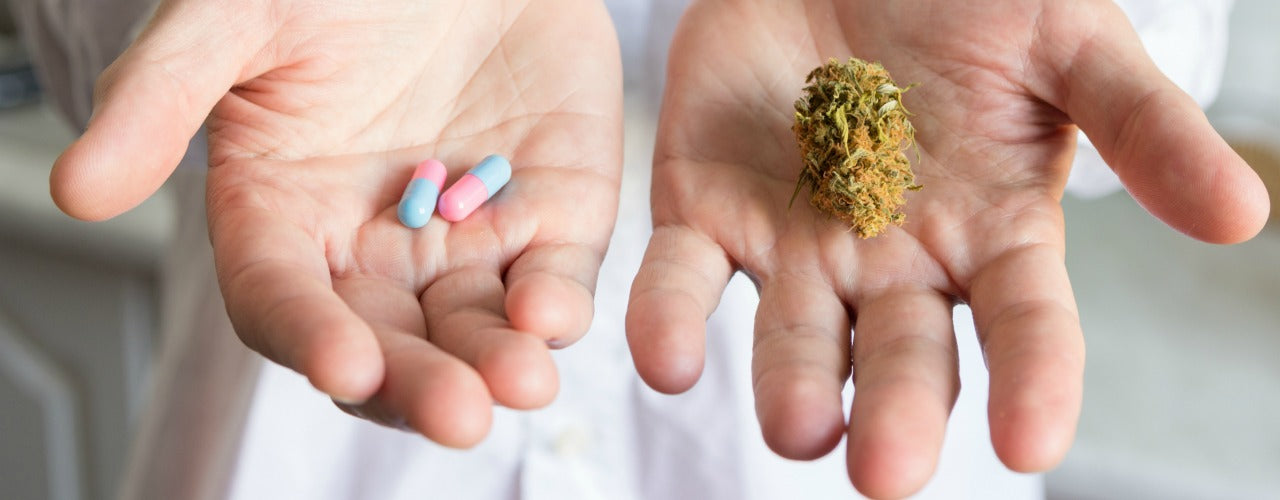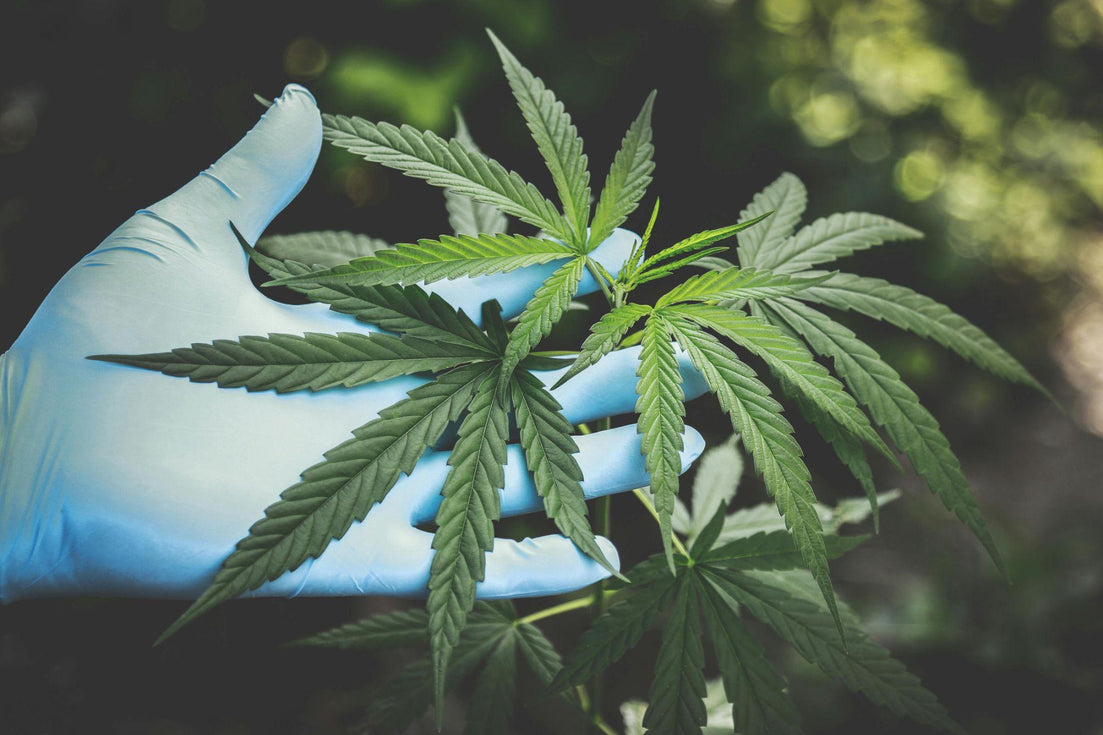Your cart is currently empty.

Marijuana’s popularity among fibromyalgia patients is skyrocketing. Not only is marijuana an extremely effective method of treatment for fibromyalgia, but it’s also great for those trying to kick the narcotics habit and find a more natural form of relief.
What is Fibromyalgia?
Medical professions have long been arguing over whether or not fibromyalgia even exists, but now, thankfully, many are coming to their senses. The precise cause of this condition has yet to be determined.
 The primary symptom of fibromyalgia is unexplained and frequently debilitating pain, but the illness actually comes with a wide variety of other symptoms that include but are not limited to the following:
The primary symptom of fibromyalgia is unexplained and frequently debilitating pain, but the illness actually comes with a wide variety of other symptoms that include but are not limited to the following:
- Chronic pain with specific points of tenderness or sensitivity
- Headaches
- Fatigue
- Widespread muscle stiffness
- Insomnia
- IBS
- Depression
The Endocannabinoid System and Fibromyalgia: What’s the Correlation?
All of the symptoms listed above are ones known to be caused by the endocannabinoid system. In the early 2000s, doctors suggested that fibromyalgia may be a part of a larger disease known as Clinical Endocannabinoid Deficiency (CECD).
 The endocannabinoid system links parts of your brain to their corresponding body parts. If there’s a disruption or imbalance in the endocannabinoid system, then these communication signals get disrupted which can result in pain, mood issues, gastrointestinal issues, sleep issues, and muscle spasticity, among others.
The endocannabinoid system links parts of your brain to their corresponding body parts. If there’s a disruption or imbalance in the endocannabinoid system, then these communication signals get disrupted which can result in pain, mood issues, gastrointestinal issues, sleep issues, and muscle spasticity, among others.
Studies Connecting the Endocannabinoid System and Fibromyalgia
There are several studies that have suggested this connection. Below, we’ve summarized the important research.
Study 1: Is CECD real?
Dr. Ethan Russo, the Medical Director of Phytecs and respected neurologist and pharmacologist, suggested the possibility of CECD in 2003. He linked IBS, fibromyalgia, and migraines, concluding that they all “display common clinical, biochemical and pathophysiological patterns that suggest an underlying clinical endocannabinoid deficiency that may be suitably treated with cannabinoid medicines”.
Study 2: Cannabinoid Medicine
In 2008, Russo expanded the aforementioned paper, focusing specifically on pain. He concluded that THC reduces the hypersensitivity to pain experienced by fibromyalgia patients and migraine patients, alike. THC fills in for anandamide, our body’s own natural endocannabinoid.
 He went on to argue that cannabinoid medicines had additional medicinal benefits like anti-nausea, neuroprotective antioxidant, and anti-insomnia properties. These additional benefits could help relieve more symptoms fibromyalgia patients deal with than just pain, unlike their narcotic counterparts.
He went on to argue that cannabinoid medicines had additional medicinal benefits like anti-nausea, neuroprotective antioxidant, and anti-insomnia properties. These additional benefits could help relieve more symptoms fibromyalgia patients deal with than just pain, unlike their narcotic counterparts.
Study 3: Cannabinoids Could Improve Overall Wellbeing
Researchers from the University of Manitoba studied the effectiveness of Nabilone, a synthetic cannabinoid, on fibromyalgia patients. They found that the cannabinoid was tolerated well and was effective in treating the pain. After four weeks on the medication, many patients had seen a drastic decrease in the number of tender points and their anxiety symptoms. They also saw significant improvements in the FIQ tests. The Fibromyalgia Impact Questionnaires (FIQ) were designed to determine the quality of life disturbances of fibromyalgia, like depression, fatigue, muscle stiffness, work interference, and overall physical function.
The authors of the study stated that this suggests nabilone could be an effective treatment, even for those with severe cases.
Study 4: A Closer Look at CECD
Ten years after the initial suggestion of CECD, California-based researchers explored the potential condition further. This study confirmed that fibromyalgia, IBS, and chronic migraines were caused at least in part by an imbalance in the endocannabinoid system. It also suggested that the endocannabinoid system could play an essential role in many other neurological and otherwise unexplained conditions.
How is Cannabis Effective?
There is far more research to be done in determining the precise connection between the endocannabinoid system and fibromyalgia. Only further research will tell just how effective a treatment cannabis-based medications can be. There are a few significant ways already determined that cannabis helps relieve symptoms of fibromyalgia.
Sleep
Fibromyalgia patients struggle with sleep disturbances. Marijuana can both help you fall asleep and help you stay asleep by extending your deep sleep cycle. This is incredibly important to those struggling with fibromyalgia, as too many interruptions in their sleep could increase the likelihood of flare-ups the following day.
 A heavy indica strain will do the trick to help you fall asleep and stay asleep, ensuring you get plenty of rest for the next day.
A heavy indica strain will do the trick to help you fall asleep and stay asleep, ensuring you get plenty of rest for the next day.
Pain
A recent survey found that 62% of fibromyalgia patients using cannabis as treatment found it to be “very effective” in relieving their pain. This showed marijuana being more effective than common prescription drugs used to treat this condition, which only had 8-10% of patients claiming they were “very effective” for pain.
Many other studies have indicated that cannabis can replace opiates or be effective working in tandem with them. There are even topical treatments infused with cannabis that relieve pain when rubbed on site.
Muscle Spasticity
Muscle spasms, twitching, and muscle tightness are all common symptoms of fibromyalgia. Cannabis has proved to be an effective treatment of these symptoms not only in fibromyalgia patients but also in those suffering from Multiple Sclerosis (MS).
Depression
Chronic illnesses often lead to depression in those inflicted with them. It makes sense; who would be happy to be in pain all the time, missing out on important moments in life? Luckily, cannabis can help. THC is a potent antidepressant, as are CBD and CBC, which have strong mood-lifting properties.
Gastrointestinal Issues
As previously stated, IBS and fibromyalgia are closely related conditions. IBS can cause the stomach to cramp, causing pain, gassiness, and either constipation or diarrhea. We have endocannabinoid receptors throughout our guts, making marijuana the perfect medicine to help treat stomach or intestinal irritation. For more severe gastrointestinal problems, opt for a strain with a higher THC concentration.
Patient Experience
Many fibromyalgia patients are swearing by cannabis as a treatment for their condition and its many symptoms. While science is catching up in terms of studies and research, patients have long been going public about how great treatment marijuana provides for fibromyalgia.
Edible Alternatives
Not everyone likes smoking. In fact, there are quite a few people that would pass on this miracle natural medication if smoking were the only form of consumption. Luckily, it’s not. You can use fresh, uncured flower and marijuana leaves in all sorts of recipes from juices and smoothies to using the leaves as an herb, like parsley or cilantro.
 By eating raw marijuana rather than smoking it or consuming activated edibles can improve certain medicinal benefits, as raw marijuana is full of cannabinoid acids which may actually be more effective in treating certain symptoms. For more information on eating raw cannabis, see this article which dives deeply into the subject.
By eating raw marijuana rather than smoking it or consuming activated edibles can improve certain medicinal benefits, as raw marijuana is full of cannabinoid acids which may actually be more effective in treating certain symptoms. For more information on eating raw cannabis, see this article which dives deeply into the subject.
There are many ways in which those suffering from fibromyalgia can benefit from marijuana. Even though there’s still plenty of room for further research, there are already signs of how promising this treatment could be.
. Written by Megan Medeiros (BA)
Written by Megan Medeiros (BA)
Megan Medeiros has a bachelor’s degree in English and is currently working on a master’s in English at James Madison University. She's the owner and operator of Medeiros Writing, and has been working as a cannabis writer for the past three years, mostly following the legal climate of marijuana, especially in areas like California, Colorado, Oregon, Canada, and other legal areas.
This post contains references to products from one or more of our advertisers. We may receive compensation when you click on links to those products. For an explanation of our Advertising Policy, visit this page. All photos were sourced from Pinterest.com | updated 2021



